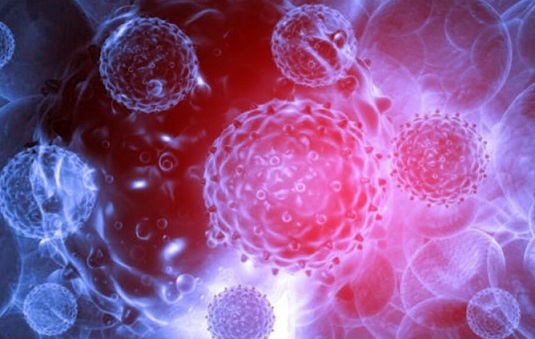Nikhil Prasad Fact checked by:Thailand Medical News Team Jan 16, 2025 9 months, 2 weeks, 2 days, 21 hours, 28 minutes ago
Medical News: A groundbreaking study conducted by researchers from the Children’s Hospital of Chongqing Medical University has shed light on how human metapneumovirus (hMPV), a common respiratory pathogen, interacts with human cells. This
Medical News report explores the findings, revealing how hMPV triggers a protective mechanism called autophagy in human cells. Autophagy plays a pivotal role in defending against infections, and understanding its relationship with hMPV could pave the way for new antiviral treatments.
 Cellular Autophagy in Human Metapneumovirus Infections
What Is Human Metapneumovirus?
Cellular Autophagy in Human Metapneumovirus Infections
What Is Human Metapneumovirus?
Discovered in 2001 in the Netherlands, hMPV belongs to the Paramyxoviridae family and is a significant cause of respiratory infections globally. It is particularly prevalent among infants, young children, and the elderly, second only to respiratory syncytial virus (RSV) in causing severe respiratory conditions. Clinical symptoms of hMPV often overlap with RSV, and co-infections with other viruses, including SARS and influenza, are not uncommon.
Despite its discovery over two decades ago, much about the infection mechanisms of hMPV remains poorly understood. Current research primarily focuses on its epidemiology, leaving critical questions about how it interacts with the host unanswered. This study delves into the intricate dynamics of this interaction, particularly highlighting the role of autophagy in hMPV infection.
What Is Autophagy?
Autophagy is a self-protective and self-balancing process within cells. It acts as an immune response mechanism, helping cells combat viral and bacterial infections. Through autophagy, cells can degrade harmful components, such as viruses, or recycle their own damaged parts. This process coexists with apoptosis (programmed cell death) and necrosis, forming a complex system of cellular regulation.
Studies have shown that various viruses either induce or inhibit autophagy, depending on their nature. Some viruses, like the influenza virus, trigger autophagy as part of the cell’s defense mechanism. Conversely, others, like the Kaposi’s sarcoma herpesvirus, can suppress autophagy to evade immune responses.
Key Findings of the Study
The study conducted by the Chongqing research team aimed to uncover whether hMPV infection activates autophagy and, if so, through what mechanisms. Using both cellular and animal models, the researchers demonstrated that hMPV indeed induces autophagy via specific signaling pathways. Here are the primary findings:
-Evidence of Autophagy Activation: In human bronchial epithelial cells (16HBE), infection with hMPV led to increased levels of autophagy markers such as LC3-II. Time-dependent experiments revealed that autophagy activation peaked 96 hours post-infection.
-Signaling Pathways Involved: The study identified the JNK (c-Jun N-terminal kinase) and MEK/ERK (mitogen-activated protein kinase/extracellular signal-reg
ulated kinase) pathways as critical for autophagy activation. These pathways were confirmed through experiments using specific inhibitors, SP600125 and PD98059, which effectively reduced autophagy levels when applied.
-Role of Autophagy in Viral Replication: By inducing autophagy with rapamycin, the researchers observed a significant reduction in hMPV replication. Conversely, inhibiting autophagy using 3-MA or siRNA targeting LC3 increased viral replication. These results indicate that autophagy serves as a protective mechanism, limiting the replication and spread of hMPV within host cells.
-Animal Model Validation: The findings were validated in BALB/c mice. Mice infected with hMPV exhibited increased autophagy-related gene expression and protein levels. Histological analysis showed lung tissue inflammation and thickened bronchial walls in infected mice, further confirming the physiological relevance of autophagy in combating hMPV.
Implications of the Findings
The study provides compelling evidence that autophagy plays a crucial antiviral role during hMPV infection. By activating autophagy, the host cells can inhibit viral replication and protect themselves from further damage. This discovery has significant implications for developing new antiviral therapies, especially those targeting autophagy pathways.
Moreover, understanding how hMPV triggers specific signaling pathways like JNK and MEK/ERK offers insights into its infection mechanism. These pathways are associated with cell stress responses and immune regulation, making them potential targets for therapeutic intervention.
Conclusion
The study by researchers at the Children’s Hospital of Chongqing Medical University highlights the intricate interplay between human metapneumovirus and host cells. It reveals that autophagy, a natural cellular process, is activated during hMPV infection and serves as a protective mechanism against viral replication. The findings underscore the potential of targeting autophagy pathways to develop novel antiviral drugs and vaccines.
While this research marks a significant step forward, it also opens the door for further investigations into the precise mechanisms of autophagy activation and its broader implications in viral infections. By enhancing our understanding of virus-host interactions, studies like this lay the groundwork for combating infectious diseases more effectively.
The study findings were published on a preprint server and are currently being peer reviewed.
https://www.researchsquare.com/article/rs-7966/v1
For the latest HMPV News, keep on logging to Thailand
Medical News.
Read Also:
https://www.thailandmedical.news/news/chlorpromazine-found-to-inhibit-human-metapneumovirus-hmpv-by-blocking-virus-internalization
https://www.thailandmedical.news/news/hmpv-enhances-coinfections-by-opportunistic-bacterial-pathogens-via-the-suppression-of-il-1beta-transcription
https://www.thailandmedical.news/news/stat2-plays-a-crucial-role-in-the-host-s-susceptibility-to-hmpv
https://www.thailandmedical.news/articles/hmpv-human-metapneumovirus
